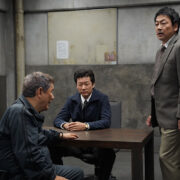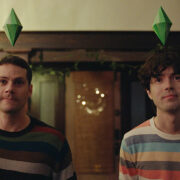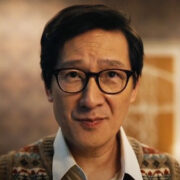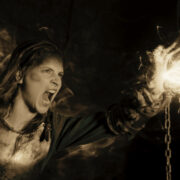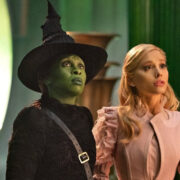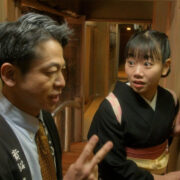Revisiting AVATAR: THE LAST AIRBENDER
Aspiring journalist and film critic based in the SF Bay…
Children’s television programming is hard to perfect. Kids can be easily satiated — bright colors and wacky hijinks will certainly do the trick when your brain isn’t fully developed — and it’s difficult for them to process complex messages in the media they consume. That’s why when creating media for younger audiences it’s incredibly easy to opt out of including anything of depth at all. But the true test of a show’s merit is the impact it makes on one’s life — what will happen to it when its original viewers age out of it.
Avatar: The Last Airbender enthralled me as a child. The story of a world with four distinct nations founded on elemental magic (water, earth, fire, and air) imbalanced by the Fire Nation’s attempts to conquer, whose only savior was a 12 year old Avatar named Aang — the destined master of all four elements. When I reached middle school and the way I consumed media slowly began to shift, the series was abruptly taken off Netflix (I guess you could say when the world needed it most…it vanished). I began to realize the full value of its content but was never truly able to relive the series as a whole.
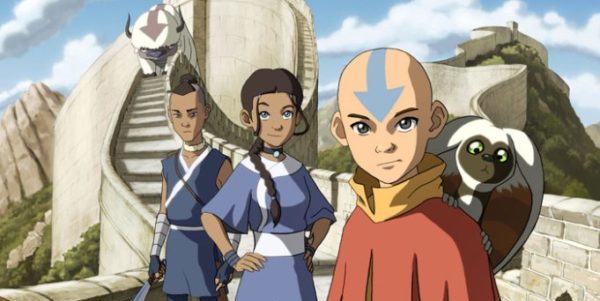
It seems only fitting that the year I have completed high school, a symbolic close to my childhood, the series has returned to Netflix and allowed me and everyone else who grew up with this show to dive back in once more. It’s a rewatch (and a first watch for some) that’s sparked a widespread online obsession; an Avatar renaissance, if you will. It’s more than nostalgia, it’s a resurgence that’s caused many to reexamine the important messages the show provided and the incisiveness with which they were relayed — all marketed to a young audience.
Earthly Beginnings
Creators Michael Dante Dimartino and Bryan Konietzko formed the show with a sprawling, cinematic view in mind; a framing fit for the mythic sort of tale they sought to tell. It was no silly sitcom or half-baked adventure, it was meant to be the stuff of legends; a fusion of the “chosen-one” lore they had both grown up with and the Anime filmmaking style they revered.
The initial pitch was loose, an idea of an “air guy” in the tundra that was being suppressed by “fire people”, and though it was heartily accepted by Nickelodeon, constraints were given. They had to be able to show action without gratuitous violence because of the young audience, and that became one of the primary influences for the show’s key fantasy feature — element bending. Manipulation of water, earth, fire, and air respectively, as both a method of fighting and a way of life. Each element was paired with a different region — the Water Tribe, Air Nomads, Fire Nation, and Earth Kingdom — and with each region came various cultural influences, primarily Asian.
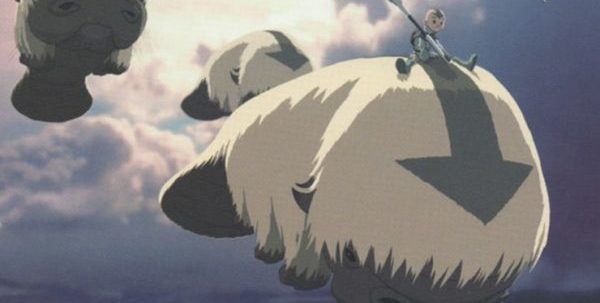
It would be easy to generalize a show created by two white men and influenced by Anime and Asian culture as ignorant and appropriative, but that would undermine the efforts and research done on part of the show, as well as the dedicated team behind it. For bending, martial arts instructor Sifu Kisu was consulted and he formed distinct styles for each kind of bending using four main martial art styles as points of influence — Tai Chi for waterbending, Hung Gar Kung Fu for earthbending, Northern Shaolin martial arts for firebending, and Baguazhang for airbending. The influence extended beyond mere fighting style as well, e.g. the Tai Chi principle of Yin and Yang forming the literal core of the Northern Water Tribe, and playing a key role in the Book 1 finale.
It’s the racial aspect of Avatar that is perhaps the trickiest, however. While none of the nations directly typify a specific ethnic group, there are inspirations that are impossible to ignore, namely the Fire Nation being representative of Imperial Japan. The Air Nomads are inspired by Tibetan monks but the concept of the Avatar draws largely from Hinduism and the idea of reincarnation. The Water Tribe has mixed Inuit and Chinese influence. It’s a melting pot of Asian culture and aesthetics that is not used appropriately but to frame Eastern philosophy and virtues that are usually obscured from younger audiences. It’s not a perfect show or a perfect method of representation (the briefly shown Guru Pathik and the sandbenders are both questionable in their racial influences) but it’s served as home for many young Asian viewers such as myself by having a full cast of non-white characters who hold their own agency and tell their own stories.
Fighting With Fire
The characters truly round out the whole show and what makes them so beloved is that they’re largely imperfect. The same black and white perspectives that are unwelcome in Eastern philosophy are rejected in Avatar as well, and the show is painted with broad, morally gray strokes. The characters’ flaws complete them, and out of all the flawed individuals in the Avatar universe, arguably no one is more conflicted than the banished Fire Nation prince, Zuko.
His redemption arc is an arduous one. The initial hunt to find Aang and redeem himself from the dishonor burned into his skin is fueled by blind want, for an acceptance he’s not even fully sure he desires, and he buries his insecurity and uneasiness beneath anger. His worldview is pitifully narrow (as most angsty 16 year olds’ are), and this is made clear in every interaction with his kind, aged Uncle Iroh — who himself has gone to great lengths to redeem himself from past war crimes. Iroh is tolerating and gently guiding of outwardly bitter Zuko, and spends Book 2 in the Earth Kingdom instilling humble values in his nephew that his tumultuous childhood had robbed him of. The lulling domesticity of the pair’s jointly owned tea shop is healing, and hope for reform blooms readily until Zuko’s past comes crashing back into him.
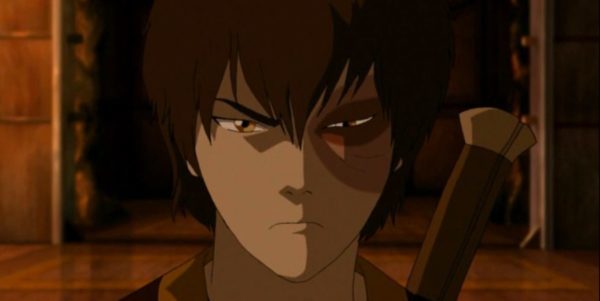
It’s during the Book 2 finale when he betrays his uncle and reclaims his royal seat alongside his sister Azula that Zuko’s brewing uncertainty reaches its peak. The choice is shocking to witness but painfully truthful to his character — the acceptance of his father, Firelord Ozai, has been the only objective he’s known for all these years, and who is he to turn it down now? It’s easier for him to accept the pre-constructed fate that has been thrust upon him, what he’s always imagined is right, rather than decipher the disquiet inside him.
Through assuming this uneasy position of power, attending a war meeting at his father’s side as he’d always wished, and still being weighed down by the guilt of his betrayal, Zuko is able to take his future into his own hands and truly take his uncle’s words to heart — “It’s time for you to look inward and start asking yourself the big question: who are you and what do you want?”. He confronts his father, utilizing Iroh’s lessons to defend himself against Ozai’s lethal lightning, and sets off to help the Avatar and right the wrongs of his forefathers.
The seeds of Aang and Zuko’s unlikely union are planted early on. In the Book 1 “Blue Spirit” episode, Aang timidly asks “If we knew each other back then, do you think we could’ve been friends?”. This lingering sense of connection and possibility is further enforced later in Book 3 when the two boys learn that famed opponents Avatar Roku and Fire Lord Sozin were not just close friends in their childhood, but Roku is Zuko’s great-grandfather. Their pasts are twined by blood relations.
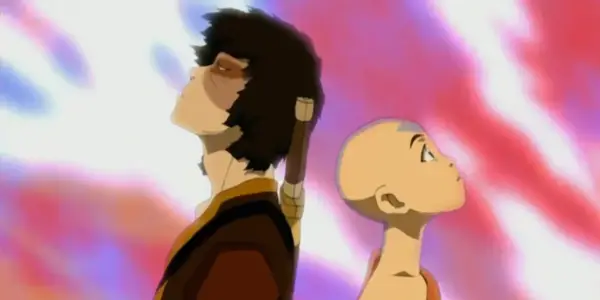
When Zuko finally joins forces with the Aang Gang to teach the young Avatar firebending, it’s not easy for him to gain their trust, but he works exceedingly hard to atone for his mistakes (through three life-threatening “field-trips” with Aang, Katara, and Sokka, respectively), gaining a chosen family and repairing the broken link within his and Aang’s shared history. This depiction of forgiving without broadly forgetting, genuine change, and the hard work that it takes to do so is one beautifully written and incredibly important to display. People are not binary in their morals nor are they forever defined by their ancestors. Change is not easy, but it is always possible, and it’s up to the individual to have the strength to do so.
Dark Waters
It seems that Avatar was always pushing the boundaries, redefining what was deemed as “acceptable” children’s programming with its depiction of genocide, imperialism, colonialism, and the trauma that accompanies it. In spite of all the pushback, the crew received from Nickelodeon on more heavy moments (e.g. Jet’s puzzling “death”) so much is preserved and communicated.
The three seasons of the show serve mainly to track Aang’s path to defeating Firelord Ozai, but underpinning it all is a complex portrait of the various forms the horrors of imperialism and colonialism take, and how the nations are all affected by it. The Earth Kingdom is mostly occupied, and its last remaining stronghold city Ba Sing Se is a false safe haven shrouded in political corruption (repeat after me: There is no war in Ba Sing Se). The Water Tribe has dwindling numbers after the Fire Nation raids, and its surviving waterbender sect has rooted itself in tradition to completely barricade itself, though it later proves unsuccessful. Even the Fire Nation is emphatically humanized throughout Book 3 — many residents are impoverished under their government’s neglect, and even those who aren’t are being fed false history and war propaganda from birth. The distinction between citizens and the corrupt regime they are trapped under is made clear.
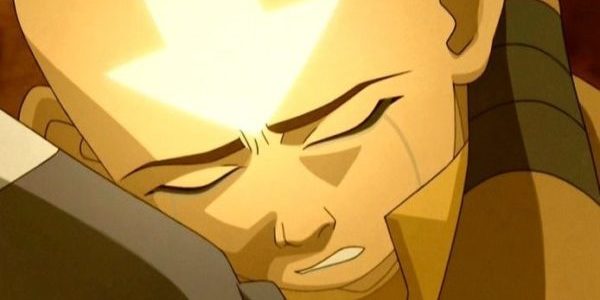
But it’s the Air Nomads’ ruin that is the most devastating; a near-total massacre that Aang only witnesses in echoes a hundred years later. His grief isn’t always at the forefront of his actions but he carries it with him constantly, and the moments he does break (each time he enters the Avatar state) are grave. Appa’s kidnapping in Book 2 turns him vicious in a manner little seen in previous episodes because his single link to his past has been snatched away; his kin in being the last of one’s kind, gone.
It’s delicate fuel to his fire. The love he has for people in both his past and present powers him but disallows him to fully detach himself. He and Zuko are both foils of each other in this way: Aang grieves silently for the love he has lost and clings tightly to the family he has, while Zuko finds turmoil in needing to separate from a family that never cared to show him love and find people of his own.
Children of War On-Air
Of course, the perpetrator of all this destruction is none other than Firelord Ozai. His impact is expansive but his true presence is little seen, with his first full appearance being in Book 3’s first episode. He’s characterized through his actions — various nations suffering under his government’s repressive rule, and sparse retellings of his life from those who knew him. In a series that seeks to humanize and develop every character it features, Ozai is remarkably blank. An inhuman initiator of the trials Aang and Zuko both undergo as the two pillars of the show and reflective of the real-life horrors of imperialism and abuse that ravage our reality. He’s less than a person, he’s emblematic of larger, malicious systems.
In the face of his tyranny blooms strength and an insistence for balance and harmony — the true heart of the show — and what makes it furthermore powerful is the youth of the characters who express it. It’s sometimes difficult to remember considering their incredible fighting capabilities and emotional strength during wartime, but they’re all really just children. Constantly being shaped and reshaped by the people they meet and the experiences they undergo with still developing moral compasses and world views. Its enormous older following be it as it may, Avatar features children and is a children’s show and a remarkably important one at that.

When asked about his involvement in Avatar as a martial arts consultant, Sifu Kisu stated “One of the reasons I signed on for the show was the message Bryan and Mike wanted to share with children. Concepts of honor, duty, loyalty, friendship, and harmony. Thinking beyond self. Empathy. Compassion”. It’s difficult to think of another kid’s show that illustrates all of these with the same articulation and passion as Avatar, with its ineffaceable mark on myself and so many other people across the world.
Conclusion
I tend to think of Avatar‘s audience as split into generations — the millennials who watched when it initially aired, the older Gen Z who viewed it during its first bout on Netflix (myself included), and now a new crop of young Gen Z viewers from its latest round on Netflix. There are few TV shows whose impact can be felt over a decade after their release, revered by and unifying audiences of all ages, but when one does come along it’s impossible to forget. Avatar: The Last Airbender is a story for the ages. Its heartbeat of fire burns bright a full 15 years after its initial release, and it will likely never be put out.
What are your thoughts on Avatar‘s return to Netflix? Discuss in the comments!
Watch Avatar: The Last Airbender
Does content like this matter to you?
Become a Member and support film journalism. Unlock access to all of Film Inquiry`s great articles. Join a community of like-minded readers who are passionate about cinema - get access to our private members Network, give back to independent filmmakers, and more.
Aspiring journalist and film critic based in the SF Bay Area. Loves Guillermo Del Toro, Bong Joon-Ho, and any film with an impromptu dance number.




